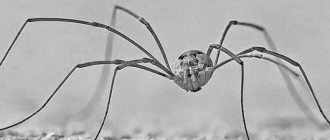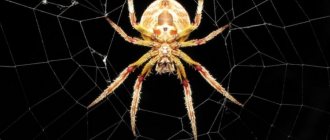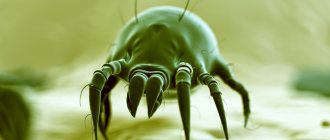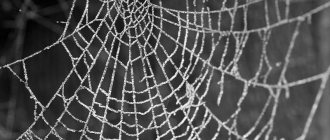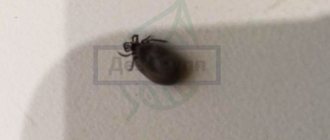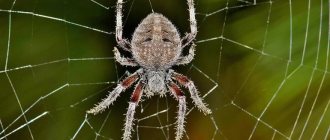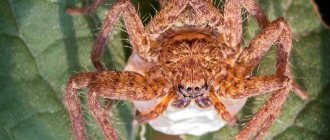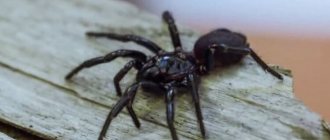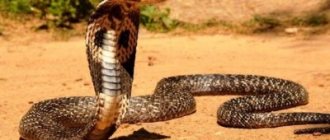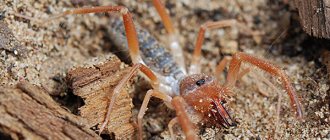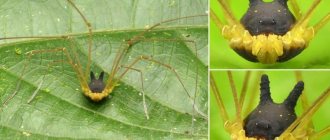Orb-weavers are spiders whose web-weaving technique can delight even a professional weaver. One day, scientists even conducted a funny experiment - they sent two representatives of this species to one of the orbital stations. Imagine their surprise when these creatures, even in conditions of complete weightlessness, managed to create a web of ideal shape and structure.
What else do we know about these spiders? For example, where do they live? What do they eat? And how dangerous are they for people?
general information
Orb-weavers are spiders, whose family includes more than 3 thousand species. Taking this into account, it is safe to say that they are the leaders among similar creatures. However, this also means that it is quite difficult to give them a general description. Indeed, despite some similarities, their external differences can drive even an experienced researcher into a stupor.
What unites them all? The correct answer is a web; all orb weavers weave it. Spiders of this species, despite all their differences, create webs of similar shape. It is difficult to confuse it with the creations of other arachnids, since it has an almost ideal shape. Looking at it, you can clearly distinguish both the main threads and additional ones in the form of circles.
Reproduction
There is still no reliable information about the reproductive behavior of horned spiders in the wild. All data is obtained only as a result of laboratory observations. It is unknown whether a female naturally mates with only one or several males.
The gentleman who has decided to procreate warns the lady about the seriousness of his intentions with four quick blows to the edge of the net. He repeats them until the beauty demonstrates her attitude towards him. If she doesn’t like the applicant, she will simply drive him away.
If the answer is positive, the male approaches his chosen one and, in order not to fall, joins her with the help of a thread. Mating lasts about 35 minutes and is repeated several times with short breaks.
The female lays eggs in the fall from 100 to 260 eggs in one oblong cocoon of golden or less often greenish color. It attaches nearby to the underside of the leaves.
After the completion of construction work, the mother dies. Her life expectancy does not exceed one year. Males live for about 3 months and die one week after mating.
The spiders hatch in winter and remain together for two to five weeks, and then scatter in different directions.
Appearance of spiders
These representatives of arachnids boast the richest range of skin tones. They can be either snow-white or poisonous green. In general, the color of their body depends on their habitat and serves as a kind of natural camouflage.
But there is also something that makes all representatives of the Orbweaver species similar to each other. Spiders of this family have a large abdomen, which is much larger in volume than the cephalothorax. Also on the front pair of paws there is a special process, thanks to which they weave their web.
Taxonomy
About 30 species. Before 1990 genus Nephila
was part of the family Araneidae.
In 2006, Norman Platnik established a separate family Nephilidae, taking into account the revision of Matjaž Kuntner
.
Some species of this genus became part of the genus Nephilengys
(L. Koch, 1872; Thetragnathidae).
- Nephila adelaidensis
Hogg 1910 - southern Australia - Nephila ambigua
Kulczyn'ski, 1911 - New Guinea - Nephila antipodiana
(Walckenaer, 1842) - China, Philippines - New Zealand - Nephila celebesiana
Strand, 1915 – Sulawesi - Nephila clavata
L. Koch, 1878 – India – Japan - Nephila clavipes
(Linnaeus, 1767) - USA - Argentina - Nephila clavipes fasciculata
(De Geer, 1778) - USA - Argentina - Nephila clavipes vespucea
(Walckenaer, 1842) - Argentina - Nephila comorana
Strand, 1916 - Comoros - Nephila ornuta
(Pallas, 1772) - Guyana - Nephila constricta
Karsch, 1879 - tropical Africa - Nephila edulis
(Labillardière, 1799) - Australia, New Caledonia - Nephila fenestrata
Thorell, 1859 - South Africa - Nephila fenestrata fuelleborni
Dahl, 1912 - East Africa - Nephila fenestrata venusta
(Blackwall, 1865) - Africa (west and central) - Nephila inaurata
, (Walckenaer, 1842) - Mauritius, Rodrigues, Réunion - Nephila inaurata madagascariensis
(Vinson, 1863) - South Africa, Seychelles - Nephila komaci
(Kuntner & Coddington, 2009) - South Africa, Tanzania, Madagascar - Nephila kuhlii
Doleschall 1859 – India – Sulawesi - Nephila laurinae
Thorell, 1881 - China - Solomon Islands - Nephila laurinae novemmecklenburgiae
(Strand, 1911) - South Africa - Nephila meridionalis
Hogg, 1910 - southern Australia - Nephila meridionalis hermitis
Hogg, 1914 - South Africa - Nephila pilipes
(Fabricius, 1793) China, Philippines - Australiamit einer Unterart N. p. malagassa (Strand, 1907) – Madagassar
- Nephila pictithorax
Kulczyn'ski, 1911 - New Guinea - Nephila plumipes
(Latreille, 1804) - New Guinea, Australia, New Caledonia - Nephila robusta
Tikader, 1962 - India - Nephila sarasinorum
Merian, 1911 – Sulawesi - Nephila senegalensis
(Walckenaer, 1842) - West Africa - Ethiopia - Nephila sexpunctata
Giebel, 1867 - Brazil, Paraguay, Argentina - Nephila sumptuosa
Gerstäcker, 1873 - East Africa, Socotra - Nephila tetragnatoides
(Walckenaer, 1842) - Samoa, Tonga, Fiji - Nephila turneri
Blackwall, 1833 - Africa (west and central) - Nephila turneri orientalis
Benoit, 1964 - Africa (central and eastern) - Nephila vitiana
(Walckenaer, 1847), - Indonesia (Sulawesi), Fiji, Tonga
Habitats
The trapping networks of orb-weaving spiders are scattered throughout the world. They can be found in both North and South America, Africa, Europe and even Australia. Some representatives of this species feel quite confident in Russia. In particular, the most common is the cross spider.
If we talk about the preferences of these arachnids, then we can say with confidence that they like quiet and cozy corners, hidden from prying eyes. Therefore, they try to weave their web in those places where contact with the human world is minimal.
However, sometimes they can change this rule. The reason for this is the desire to find land rich in food. Therefore, you should not be surprised that the orb-weaving spider decided to settle in the garden or vegetable garden. After all, in such places there is a lot of prey, which, by the way, is often a pest.
Insect hunters
Orb weaving spider's orb web
The spiral networks of orb weavers are one of nature's engineering wonders. The diameter of the web can vary from a few centimeters to a whole meter, but all webs have a common basic structure: a “bridge” line stretched between the stems forms a triangle along with two “anchor” threads that “tie” the web to the ground. Inside the web are a series of threads called “radii” radiating from the center and forming the frame of a radial spiral, the most characteristic feature of a circular web.
It takes the spider (more precisely, the female spider, since males do not weave webs) about an hour to create this miracle.
The circular web of the orb weaver is a real trap for insects, which, suspecting nothing, fall into it right on the fly. The orb weaver is a passive predator. He sits in the center of a shiny silky spiral and waits for “lunch” to fly to him.
The orb weaver has eight eyes, which provide excellent visibility, although the spider does not need to look out for prey. He learns about the replenishment of his food supplies thanks to the vibration of the threads of the web. In anticipation of prey, the orb weaver holds on to the web with tenacious claws, which are located at the ends of its legs. He usually sits head down, clinging to non-sticky threads emanating from the center of the catcher's Net.
Once caught in the web, the unlucky insect sticks to the main spiral of threads coated with a kind of “glue”. Trying to escape from the net, the victim becomes even more entangled in the sticky mass. The spider detects the trembling of the threads and hurries along the dry threads to its prey.
If the spider lands on the wrong thread, it will free itself, but the victim will no longer be able to escape from the sticky web.
The orb weaver is wary of insects caught in its web. If it is a dangerous catch, such as a wasp, it will usually break the threads around it
Some orb weavers are armed with spines that protect the spiders if the prey resists. When the insect is not dangerous, the spider kills it by biting it with poisonous “fangs”.
The poison not only kills, but also digests the prey. The spider rarely starts eating immediately after capturing the victim. First, he wraps the insect in thread and waits. The spider feeds on liquid food and cannot chew, so it injects digestive juices into the body of dead or dying prey. The enzymes eat away at the insect's tissue, turning it into a thick "soup" that the spider sucks out.
How does a spider weave its web?
As one might guess, the orb weaver needs a web not only for aesthetic pleasure. In practice, this is a powerful catching mechanism, honed over many centuries by evolution. How does it work?
The construction of a new web begins with the spider throwing one end of its web into the wind in the hope that it will catch, for example, on a tree. After the goal is achieved, the orb weaver, using the newly made bridge, begins to weave other branches of the web.
At the same time, he has two types of threads in stock. One is strong and elastic, the second is sticky. He uses the first to construct the frame of the web. The second one is wound in circles in a spiral in order to cover as large an area as possible.
Along the entire web there is a signal thread, the vibrations from which can inform the hunter that the victim has flown into a trap. After which he can only wait a little until the prey is finally entangled in the net.
Reproduction
Arthropods of the genus Loxosceles breed from May to July. Over 2-3 months, the female makes several cocoons with 5 eggs in each. She places them in her web. The presence of cocoons with eggs is the reason why the female can bite on her own initiative.
The spiderlings hatch 30 days after laying. Young animals reach puberty only after a year of life.
Due to global warming, scientists have expressed concerns about the expansion of Loxosceles Reclusa's range. But spiderlings of this species do not use webs to disperse through the air over long distances. Therefore, the world is threatened only by the increased density of spiders in their ancestral territory.
Orb weaving spider: poisonous or not?
Many are interested in how dangerous it is for others, including people. Well, this arachnid has poisonous glands. But its toxins are only dangerous to insects and small mammals. In particular, it can cause paralysis in them.
As for people, the bite of an orb-weaving spider is not fatal for them. But the pain from it will haunt the poor fellow for a long time. True, spiders rarely bite people; it is much easier for them to jump to the ground and run away rather than get involved in a meaningless fight with a giant.
origin of name
An insect with long legs, similar to a spider, has several names.
The arthropod's paws are easily torn off, and the damaged area quickly heals without causing harm. The leg continues for some time to make movements that resemble a scythe during haymaking. This is where the name comes from: goat's leg, haymaker, spider's leg, goat's leg
The paw attracts the enemy's attention while the spider runs away. Natural enemies are other arachnids and birds. The Latin name opiliones literally means "shepherd"
The associations arose due to the long legs resembling stilts. In ancient times, shepherds often used stilts to make it easier to keep track of their flock. An American writer named the spider opiliones due to its massive distribution in pastures.
A tick is also called a haymaker, which has nothing in common with an arachnid. According to genetic studies, the pigtail's DNA is more similar to scorpions than to spiders.
Cross spider
There is also an orb-weaving spider in Russia. Photos of this arachnid are presented in the article. His name is the cross. In general, this species of orb weaver is not much different from its relatives. He got his name thanks to the pattern on his belly in the form of a cross. You can meet him both in the forest and in an ordinary park.
They are often difficult to notice because they hide from people. But with the arrival of autumn, everything changes - their mating season begins. At this time, females weave webs in the most visible places so that the male does not miss them. And only with the arrival of the first cold weather do they hide in their shelter again.
Lifestyle
All jumping spiders are active daytime hunters. Their prey is small insects. The size of the prey is determined by the size of the hunter. The brave climber from Everest feeds on small flies and springtails, and the largest member of the family, the royal jumping spider, eats other arthropods and beetles that harm sugar cane.
Jumping spiders
You should not offend these useful animals. The horse hunts not only terrestrial invertebrates. Some species specialize in killing flying insects, including mosquitoes.
Jumpers do not weave webs, but actively use their threads. During the hunt, before jumping, the animal attaches a web to the place from which the jump will be made, insuring itself from falling.
Causes of phobia
Arachnophobia is a disease that is very common in the modern world. This is due to the large number of urban residents. This part of the population rarely comes into contact with spiders, which is why it is not always possible to distinguish a dangerous species from a harmless one.
In the eyes of arachnophobes, any spider appears larger than it is. In their opinion, it has longer and more tenacious legs, it moves much faster, and its bite can be fatal. Where do insectophobia and arachnophobia come from, why are we afraid of spiders? All these fears can have several reasons.
- The first is childhood memories. An unexpected fear of an arthropod can leave a trace of horror in a child’s memory. A parent's fear of spiders can also cause fear in a child. He sees how adults react with caution to the spider, and on a subconscious level he adopts this experience of handling insects.
- The second is the fear of being infected with an infection or parasite. One phobia gradually becomes the cause of another. Many people know that insects can carry infection. This means that in a person’s eyes, a spider can look like a potential threat.
- The third is the fear of being bitten. The stress suffered from a painful bite of any insect leaves a mark on the psyche of many people.
- The fourth is the shock of a sudden meeting with an arthropod. Many people, even as adults, suddenly meet a spider's gaze and experience severe fright.
